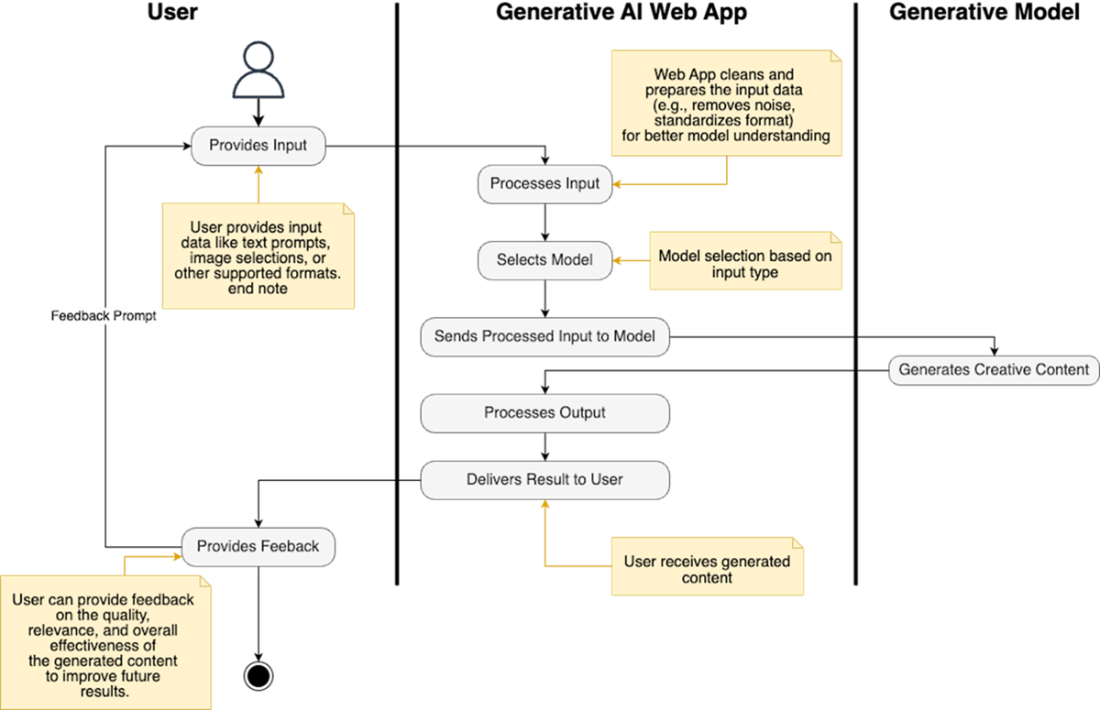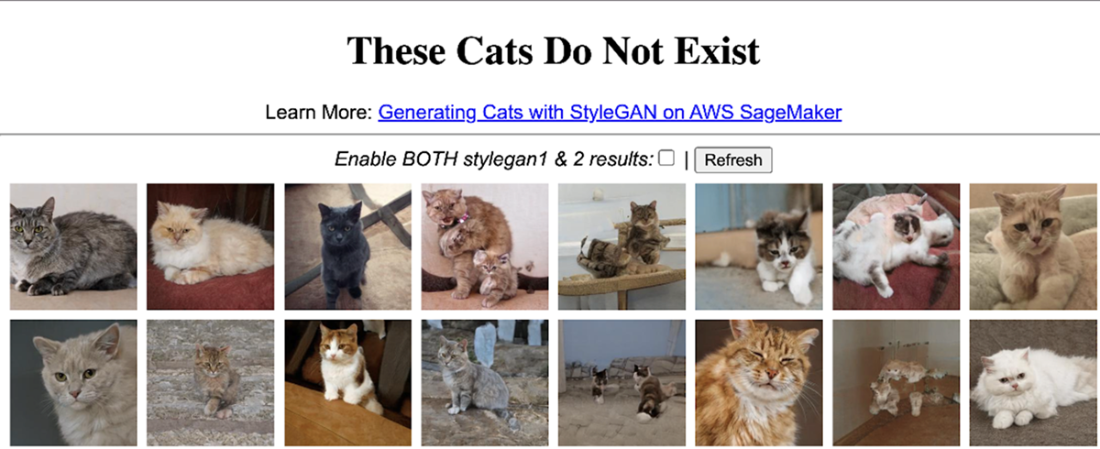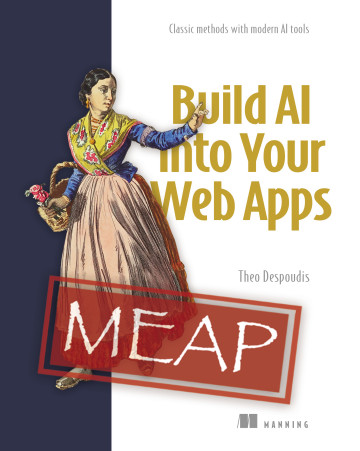1 Understanding generative AI web apps
Generative AI is reshaping web development by enabling applications to produce text, images, multimedia, and code on the fly, delivering richer, more adaptive user experiences than traditional, rule-bound systems. The chapter defines generative AI web apps as experiences powered by modern models that personalize content, power conversational interfaces, and automate workflows. It contrasts generative AI with traditional AI, highlights rapid adoption in tools such as conversational assistants and image generators, and frames both the promise and responsibilities of this technology. Readers are oriented to the chapter’s goals: understand capabilities and limitations, see where these apps fit in the web stack, and learn how to build them responsibly.
The chapter outlines the core building blocks of these apps: large language and other AI models, user interfaces (including conversational components), robust backend infrastructure, data processing pipelines, API integrations, and deployment and scaling strategies. A concise mental model covers the flow from user prompt, to processing and model selection, to generation and feedback. It surveys practical use cases—digital marketing toolboxes, customer support chat and feedback systems, and mock interview agents—and previews the book’s toolchain: React and Next.js for the interface and server logic, Vercel AI SDK for provider integrations and streaming UX, and LangChain.js for RAG and agent patterns. The book emphasizes hands-on learning through two portfolio-ready projects: a voice-enabled interview assistant and a RAG-powered corporate knowledge system.
On the technology front, the chapter introduces transformers and self-attention as the foundations of modern models, explains why today’s systems produce contextually coherent outputs, and sketches the landscape of generative approaches (including transformer-based, autoregressive, GANs, VAEs, and RNNs). It balances enthusiasm with caution, detailing challenges such as hallucinations and quality control, resource costs, security and misuse risks, regulatory concerns, and bias. Practical guidance includes setting clear objectives, constraining context, tuning model parameters, cross-validating outputs, auditing bias, and prioritizing UX through streaming, accessibility, and multimodal inputs. The takeaway is both pragmatic and forward-looking: adopt the tools and patterns now to elevate products and skills, while applying safeguards that keep experiences reliable, fair, and useful.
This diagram visually represents the flow of information and interactions between different components of a generative AI web application.

Simplified architecture diagram of a web application ecosystem. Clients, including web browsers and mobile devices, interact with the core application service, which handles user requests and business logic. The service interacts with a database to store and manage application data. Additionally, the service communicates with external APIs to access additional functionality and interacts with external services utilized by the application.

The diagram demonstrates how a Generative AI web app works: users input data, the app processes it, selects a model, generates content, delivers it, and optionally collects feedback.

An example of how AI can be used to detect whether a picture of a cat is a cat or not. It accepts an image as input and responds with yes or no (or 0 and 1).

This image shows the relationship between "generative" AI, machine learning (ML), and traditional AI.

This website https://thesecatsdonotexist.com/ shows pictures of cats that do not exist in the real world! They are all AI Generated.

This image shows some of DALL-E Generated images based on a text prompt. Source: https://openai.com/research/dall-e

Summary
- Generative AI has become very popular in recent years due to the explosion of Large Language Models (LLMs) and ChatGPT.
- Real-world uses of generative AI in web applications range from digital marketing and customer experience management to mock interview applications.
- Foundational research like Google's "Attention is All You Need" laid the groundwork for transformative technologies such as transformers, which simplified natural language processing tasks by leveraging attention mechanisms. Transformers revolutionized language modeling by improving efficiency and accuracy in understanding textual data, addressing long-standing challenges faced by traditional AI models.
- Software engineers have been using AI long before generative AI came into existence. Common applications include machine learning, search recommendations, chatbots and computer vision.
- Generative AI can generate not only text, but all sorts of media resources like images, video clips and audio. This greatly enhances their potential usage in web applications.
- Key components of generative AI web applications include AI models powered by large language models (LLMs), UI and conversational AI components, backend infrastructure, data processing pipelines, API integration, and deployment and scaling mechanisms.
- Limitations of generative AI include quality control issues, resource intensiveness, security concerns, and regulatory compliance.
- Concerns and implications of generative AI include its potential impact on jobs, the reliability of outputs, handling bias, and enhancing the user experience.
- This book will teach you all the tools and techniques you need to know to build generative AI web apps with React and Next.js.
 Build AI into Your Web Apps ebook for free
Build AI into Your Web Apps ebook for free